Case-o Azul
In which I explore the world of blue cheeses produced here in Argentina. I may have overdone it.
Something a little different today. A friend of mine here in town commented recently on how difficult it has been to find a really good blue cheese (queso azul, the title above is a bad pun) here in Argentina. I found the same thing years ago, and back in 2014 started on a search for a decent one. Over the years I’ve tried and retried various blue cheeses produced here and… do I have opinions? Of course I do. I also have more blue cheese in my refrigerator than anyone should. Ever. Come over and help me finish it off?
The “big four” in the blue cheese world are the titans of Europe: Roquefort, Gorgonzola, Stilton, and Cabrales - each with its own personality and backstory. Roquefort comes from the caves of southern France, made with sheep’s milk and aged in naturally moldy limestone grottos that give it that sharp, salty kick. Gorgonzola’s Italian roots go back over a thousand years; it’s made from cow’s milk and ranges from creamy and mild (dolce) to firm and spicy (piccante). Stilton, despite the name, isn’t made in the town of Stilton - it’s an English cow’s milk cheese with a crumbly texture and a mellow, nutty flavor. Then there’s Cabrales, the intense Spanish entry, often made with a mix of cow, goat, and sheep’s milk, aged in mountain caves until it’s practically breathing fire.
Argentina’s versions rarely, as best I’ve found, live up to the legacy that they imitate, but there are some excellent attempts. Part of that is that even those that are traditionally made from sheep’s or goat’s milk, are usually made with cow’s milk here.
Based on the figures I’ve been able to dredge up, Argentina produces about 440 tons of blue cheese per year, which is a mere 0.1% of the total cheese production in the country. I couldn’t find the number of producers of blue cheese in country, but my guess is it’s no more than a hundred. Probably far fewer - searching various markets, gourmet food shops, and dedicated cheese shops, I’ve put together… forty one cheeses (fewer producers, as some produce more than one blue) that I’ve been able to find. I’m sure there are more, but they don’t seem to be readily available, at least here in the capitol.
One note - there are several here listed under the names of gourmet cheese shops - Valenti, Franco Parma, Piccolo Positano, and Cittadella. They don’t make their own cheeses, but they also, understandably, wouldn’t part with the information of who makes their private label cheeses for them.
High Five, Five Stars, The Top Five
Alloa Vanguard Queso Azúl - elaborated using Pencillium roqueforti, in the town of Cañada Rosquín, Santa Fé province. Foil wrapped, no rind. Gleaming white, well marbled with a very blue side of blue green veining. The texture is soft and creamy, the flavor like slightly nutty burnt butter, toasted pecans, and a light herbal note. I really like this one. In fact, we had trouble stopping ourselves from eating the whole wedge in one go. Absolutely delicious Stilton style.
Lácteos Cultivo Blu Álvarez - Easily the most “different” cheese tasted, as well as being the most difficult to obtain. It’s only available direct from cheesemaker Gabriel Rodriguéz. While most of the cheeses that I had “donated” to this tasting (about a third of them, the rest purchased) were sent or made available at a local cheese monger, Gabriel insisted on driving in from Francisco Álvarez in Buenos Aires province. Produced in 4kg wheels, this is intended as a Stilton style, but such a different Stilton than others that I’ve tried. It’s semi-hard, yet has a creamy feel to it - almost seemingly like a sort of Port Salut cheese. Beautiful veining, nice saltiness, tanginess, and very grassy.
Santa Narcisa Fonte Azúl Ahumado - Something about this cheese haunts me. It’s probably the smokiness, but it’s also that it’s creamy and delicate with herbal notes, and I’m pretty sure it’s the only smoked blue cheese I’ve ever tried. Cow’s milk cheese produced in Dolores, in Buenos Aires province. It’s got a lovely gleaming white color with thin stripes of blue veining throughout. And it has a smoke ring! The wheels are always a little misshapen from the smoking process.
Ventimiglia Azul Tres Leches - A blend of “three milks” - cow, sheep, and goat. Egg shell white, tinged yellow at the edges. Creamy, smooth texture, complex herbal and nutty notes leaning towards untoasted walnuts and pecans. For me it has notes of both Roquefort and Gorgonzola, which surprised me, as Mauricio Couly, the cheesemaker, intends this as his Cabrales style. I tend to think of Cabrales being far more intense than this. Regardless, it’s a winner.
Ventimiglia Patagonzola - Produced in the town of Cipolletti, in the Río Negro province of Patagonia, this is, as might be obvious from the name, a gorgonzola style blue. The cheese is 70% cow’s milk, 30% sheep’s milk. It’s off-white in color, with plenty of strong, green marbling. It’s foil-wrapped with a thin rind that’s pinkish-brown. The texture is very creamy, and the flavor is tangy, with strong grassy notes and decent saltiness. I haven’t found a better gorgonzola style in Argentina.
Four Stars is still pretty damned good!
Cabaña Piedras Blancas Queso Azúl - a fairly well known cheesemaker located to the west of Buenos Aires, in Suipacha, mostly specializing in excellent goat and sheep milk cheeses. Their blue, however, is made from cow’s milk. Very white, with a whole lot of blue-grey veining. Almost fudgy in texture, and crumbles fairly easily. Pungent aroma of mushrooms and grass, and it’s a bit, well, funky, leaning towards the Cabrales style. I liked it a lot.
Cittadella Premium Queso Azúl - Creamy and crumbly, and mild, buttery flavor, with a nicely balanced saltiness. I don’t have details of the production of this because it’s a private label made for the Cittadella store chain by an unnamed cheesemaker. Leaning towards the Stilton style.
Don Santiago Gorgonzola - A small cheesemaker up in Córdoba, the blue is touted as a gorgonzola style cheese. It comes in individual foil-wrapped wedges. I found it to have minimal veining – maybe three thin veins passing through the whole thing. On the other hand, the texture is creamy and soft, the flavor is, indeed, classic gorgonzola, and a quite good one. Maybe a trio of thin veins is all it needed.
Emperador Queso Azúl - elaborated using Penicillium roqueforti, produced in both 2 and 4kg wheels by Grupo Savaz, in the city of Ucacha, province of Córdoba. Foil wrapped, no rind. Off-white, more or less popcorn colored, well mottled throughout with a deep blue-green mold. Browned butter and a hint of spiciness, like chilies, on the nose. Semi-hard, crumbly texture, with a hint of graininess. Mildly salty upfront with a bit of spice, browned butter nuttiness in the mid-palate continuing onto the finish. Definitely in the Roquefort style.
Franco Parma Azúl estilo Francés - elaborated using Penicillium roqueforti, produced in roughly 1kg wheels, in the town of Urdinarrain in Entre Rios province. Foil wrapped, no rind. Very white. Well mottled with blue green mold. Aromas of hay, toasted nuts. Creamy, soft. Similar flavors, along with a nice pungency. Definitely in the Roquefort style.
Franco Parma Roquefort de Oveja - elaborated using Penicillium roqueforti, and, mostly sheep’s milk (although the store has it labeled as a sheep’s milk cheese, the counterman was fairly sure it was not 100%). Produced in roughly 1kg wheels, in southern Buenos Aires province. No rind, foil wrapped. Yellowish in color with heavy blue-green veining. Herbal aromas with just a touch of funkiness. Crumbly, only semi-soft cheese. On the palate a pleasant sharpness with lovely herbal flavors. Quite good.
San Ignacio Queso Azúl - elaborated using Penicillium roqueforti, produced in roughly 2.2kg wheels, matured 45 days, in Rosario, also sold in prepackaged 180gm slices. Foil wrapped, no rind. Creamy white with a pale grey-green mold, well distributed throughout the cheese. Butter and a hint of something almost chili-like on the nose. Soft, creamy texture. Very subtle upfront flavor, slightly herbal and buttery, little salt and quite mild, with a very pleasant creamy finish. Comes across very much like a Danish blue, which in general are far milder than their other European cousins.
Toro Stracco - Cow’s milk gorgonzola style cheese from this blue specialist in Toro Pujio, Córdoba province. This one almost feels like there’s more blue than cheese to it, but it’s rather good at the same time. Definitely in the gorgonzola piccante style. Off white, creamy texture, and quite intense. A trifle salty, but not off-putting.
Tregar Queso Azúl - produced in roughly 2.8kg wheels in Gobernador Crespo, Santa Fé province. Foil wrapped, no rind. Bright white, well veined with a deep blue mold with just a touch of green to it. Buttery, herbal aromas. Creamy smooth. Mild blue, with notes of butter, cream, grass, and just a hint of salt. Another very much in the Danish blue style.
Valenti Gorgonzola - elaborated using Penicillium glaucum, produced in roughly 2.3kg wheels, in Buenos Aires province. No rind, vacuum packed. Yellow white, faint olive green marbling – so faint that a) I didn’t at first notice it as a blue, and b) the counter guy said – well, it’s made like a blue cheese, like a gorgonzola, but we don’t think of it as a blue. Grassy, cream aromas. Semi-soft cheese. Very mild, leaning pretty much the “gorgonzola dolce” style. Quite good.
Ventimiglia Blue Couly - This is Couly’s entry in the world of Stilton style cheeses here. Like his other cheeses, a blend of milks - in this case cow, goat, and sheep. Medium yellow in color, heavy blue veining in half of it, and practically none in the other half - like it was inoculated only from one side. One of the most intense blues I tried in this venture, with mouthwateringly tangy, high acidity. A bit funky, a bit salty. It’s very good, but not for the faint of heart, and despite the reputation this one has, I like his Patagonzola and Tres Leches more.
Ventimiglia Sangre Azul - I don’t know that I’ve ever encountered a blue cheddar before. Modeled after a Stilton, this has a nice creaminess to it, with a bit of blue cheese funk, but overall, it’s fairly mild on the blue side of things and more notedly intense on the cheddar side. It’s quite good, but at the same time, quite odd. Certainly unique.
Only three stars. They’re good, they’re “fine”. That’s about it.
Bavaria Queso Azúl - elaborated using Penicillium roqueforti, produced in roughly 2.5kg wheels, in Santa Fé, by Milkaut S.A., a division of the French company Bongrain. Foil wrapped, no rind. Very white. The mold doesn’t appear to be in injection lines, but is rather scattered throughout, and the cheese is pocked with cavities – the mold is also a pale to medium grey-green color. Aromas of fresh cream, a touch of brininess, and what almost seems like a faint stone fruit essence, like an underripe peach. The texture is soft and crumbly. The cheese is a bit salty upfront with a hit of raw walnut. It’s relatively mild, with a creamy finish.
El Criollo Queso Azúl - elaborated using Penicillium roqueforti, produced in roughly 2.5kg wheels, in Buenos Aires province. Foil wrapped, no rind. Very white. Well mottled with medium blue-green mold. Aromas of butter and fresh herbs. Semi-soft, slightly creamy, with bits of crystallization. Fresh, buttery and herbal flavors, mildly salty, overall mild.
Ilolay Queso Azúl - elaborated using Penicillium roqueforti, produced in 2.5kg wheels, aged 60-90 days, by Alfredo Williner, S.A., in the city of Rafaela, Santa Fé province. Foil wrapped, no rind. Off-white, bordering on yellowish, medium green mold well distributed throughout. Aromas of sour cream and grass. Semi-hard, somewhat crumbly texture. Hints of picante on the palate, medium salty, mildly herbal on the finish
La Lucila Queso Azúl - produced in roughly 2.5kg wheels in San Cristobal, Santa Fé province. Foil wrapped, no rind. Bright white, bright blue green mold, very centered. Buttery, nutty aroma. Soft, somewhat crumbly cheese, with a slight graininess. Subtle on the palate, with notes of salted popcorn, herbs, and butter, a little sharpness on the finish. Good, relatively mild blue.
La Pilarica Queso Azzurro - I have not been able to find any information about this cheese producer, other than the counter guy knew that they’re “somewhere up in Córdoba province” - presumably La Pilarica. Gorgonzola style blue, foil wrapped with a thin brown rind. Off-white with lots of greenish veining. Buttery, with notes of toasted walnuts and fresh cut grass. Lightly salty. Decent gorgonzola style, but there are better around.
La Quesera Queso Azúl - elaborated using Penicillium roqueforti, produced in roughly 2.3kg wheels, from Cassini y Cesaratto, in Santa Fé province. Foil wrapped, no rind. Off-white, almost a popcorn color, vertical stripes of mold injection, deep blue green. Buttery, almost nutty aroma with green herbs. Soft, creamy texture. The butter flavor is very prominent. Fairly mild with just a short hit of sharpness in the mid-palate and a very green herb and butter finish.
Piccolo Positano Azúl Nacional - Creamy white with well mottled deep blue-green mold centered in the cheese – there’s a roughly 1-2 cm layer around the center with no veining. Aroma of sweat socks and something slightly spicy, almost like allspice. Semi-hard, crumbly. More pleasant on the palate with spice, toasted almond and slightly burnt butter notes.
Santa Rosa Queso Azúl - elaborated using Penicillium roqueforti, produced in roughly 2.6kg wheels, matured 60 days, in Santa Fé, by Milkaut S.A., a division of the French company Bongrain. Foil wrapped, no rind. Just barely off-white, vertical stripes of mold injection, deep blue green. Fresh milk, grassy aroma. Semi-hard texture. Intense grassy, green herb flavor, toasted hazelnut, lightly salted. Mild sharpness in the mid-palate, nutty finish.
Toro Quadratto - elaborated using Penicillium roqueforti, this is an award winning cheese - one of four blues produced by Toro, in Toro Pujio, Córdoba, the classic and their Mariello (which did not fare well with me). This is a semi-hard blue made from 100% cow’s milk - I’m not sure I’ve ever encountered a blue quite this texture. Dense and pungent, it’s got a sharpness and saltiness that certainly rivals a classic Roquefort. It’s good, but… award winning?
Valenti Azúl de Santa Fé - elaborated using Penicillium roqueforti, produced in roughly 2kg wheels, in Santa Fé province. No rind, foil wrapped. Orange-white with heavy blue-green marbling, blue-black mold on the rind where the marbling has “broken through”. Pungent, earthy aroma. Dense and creamy, just slightly crumbly. Strong and sharp on the palate.
Valenti Bleu de Gruta - elaborated using Penicillium roqueforti, produced in roughly 2kg wheels, in Buenos Aires province. No rind, foil wrapped. Stark white, deep green marbling concentrated in the center with a good 1cm+ border without marbling around it. Buttery, herbal aromas. Creamy and soft, with a very mild flavor, leaning towards the same butter and herbs.
Two stars just aren’t up to snuff. I want more than just “edible”.
Franco Parma Azúl Argentino - elaborated using Penicillium roqueforti, produced in roughly 1kg wheels, in Santa Fé province. No rind, foil wrapped. Stark white with blue-green veining. Fairly soft cheese, not quite creamy, but borderline. Buttery, almost popcorn and peanut like aromas that continue onto the palate along with a hit of saltiness. Very mild cheese – with eyes closed I’d probably not guess it to be a blue.
Franco Parma Gorgonzola - elaborated using Penicillium glaucum, produced in roughly 1kg wheels, in the town of Urdinarrain in Entre Rios province. No rind. Yellowish white with forest green veining and a bit of crystallization. Aromas very funky, like slightly rancid butter and grass clippings. Creamy and soft, with a bit of crunch from the crystallized bits. Flavor is intensely grassy and herbal with a hint of butteriness. Not one of my favorites, just a bit too “green” in flavor.
Piccolo Positano Gorgonzola Nacional - Off-white with stripes of deep green mold. Lovely aroma of toasted flour and brown butter, almost like a well developed roux. Semi-hard, crumbly. Dense and creamy with strong toasted notes and a whole lot of salt, particularly in the mid-palate. A bit harsh on the finish. I generally think of Gorgonzola as the mildest of the “big three” (roquefort, gorgonzola, stilton), this one is surprisingly strong.
Shehuén Queso Azúl - I found no information about this one at all, and the folk in the store knew nothing about it either. There is a Rio Shehuen in Santa Cruz, in Patagonia, along with numerous businesses using the same moniker, so I’m guessing that this cheese is from there, though the trademark is registered to a Mendoza export company, J.A. Esnaola & Hijos. Foil wrapped, no rind. Off-white, heavily mottled with a very deep blue green mold. Pungent aroma. Soft and very crumbly, fairly sharp on the palate with a lot of intense grassy and leafy notes. Overall kind of odd.
At one, or zero, stars, I don’t want these in my house.
Adler El Triangulito de Sabor con Queso Azul - This one’s kind of a joke, but there it was in a local mini-mart. It does contain, supposedly, actual blue cheese (and apparently Adler does make and sell blue cheese, though I’ve not been able to find it) – based on the ingredient list its a blended, spreadable cheese made from blue cheese, unspecified white cheese, and Danbo, a local version of a mild Danish cheese. It has no aroma of anything but sort of a cream cheese, and no more flavor than that either.
La Paulina Queso Azúl - The cheese is fairly creamy, and has a hint of bitterness to it. It’s quite salty, actually a bit more than I find acceptable.
Lucrecia Roquefort “Los Ilusiones” - produced in roughly 3kg wheels in San Carlos, Santa Fé province. Foil wrapped, slightly crusty, yellow rind. Off white, well mottled with grey-green mold. Strong, almost briny aroma. Creamy and soft, crunchy bits of crystals. We found it overwhelmingly strong in flavor, far more than we expected from the aroma – a bit bitter, off-flavors that reminded us of wet cardboard – almost like a corked wine, and rather unpleasant
Magnasco Queso Azúl - elaborated using Penicillium roqueforti, produced in the city of Runciman, Santa Fé province – minimal info, Magnasco doesn’t even list the cheese on their website. Foil wrapped, no rind. Bright shiny white with mottled deep blue green mold starting almost 2cm in from the edge – and the only cheese I’ve seen sliced in half rounds rather than wedges. Spicy, herbal aroma. Semi-hard, dense texture. Extremely salty upfront and continuing through – this is the saltiest blue I think I’ve ever had. Sharp vinegary notes as well that stayed with us until well after the cheese was set aside. There was little that I liked about this blue.
Sancor Queso Azúl - elaborated using Penicillium roqueforti, produced in roughly 2.25kg wheels and in mini 250gm wheels, in Santa Fé and Córdoba. Foil wrapped, no rind. Off white with yellowish tinges, well-veined with a dark blue-green mold, concentrated more towards the center of the wheels. Interesting aroma, almost meaty in character, like a beef extract, or perhaps even a touch of vegemite or marmite. Semi-hard and a bit crumbly. Quite salty upfront with a fair amount of sharpness in the mid-palate, the flavor is odd with notes of old butter and a weird hint of pool-water chlorine, the latter particularly evident on the finish.
Tonutti Queso Azúl - a small commercial cheesemaker up in Entre Rios province, I found this one completely at random while wandering through Villa General Mitre, towards the western side of BA. Cream colored, a fair amount of blue-grey veining. This might be one of the most pungent of blues I’ve tried on this entire venture. Intense aromas brown butter, brine, and grass. Fairly salty – not over the top, but noticeable. I can’t say it was one of my favorites, it was just a little too intense and out of balance for my tastes.
Toro Azul Clásico - Toro is a specialist in blue cheeses, with a quartet of them being regularly produced. This is, I suppose, their sort of generic blue, from cow’s milk, Roquefort style (albeit Roquefort is made with sheep’s milk). I can’t say I was impressed. It’s overly funky with sort of slightly rotting mushroom aromas. And, like the Mariello following, it has developed this brown, semi-hard layer that’s just unpleasant.
Toro Mariello - Produced in the village of Toro Pujio, in Córdoba, this cheese is intended, I’m led to understand, to mimic the style of a Spanish Cabrales. While creamy white in the center, a good almost 2cm yellow-brown, almost semi-hard layer surrounds that. And the flavors are completely different - while the center has a nice saltiness with vegetal notes, that outer layer is overly pungent and tastes like mud.
Veronica Queso Azúl - elaborated using Penicillium roqueforti, produced in roughly 2kg wheels, matured 60 days, in Córdoba. Foil wrapped, no rind. Off-white, vertical stripes of mold injection, deep blue green. Cream, toasted almond, green leaves on the nose. Creamy, soft texture. Lightly salty, buttery flavor with some toasted almond notes and a bit of herbaceousness, slightly vinegary finish – the outer surface has an odd, slightly bitter plastic note.
Conclusions
It’s not that it’s hard to find blue cheese in Argentina, it’s just a bit difficult to find one that’s really good. The two big award winning blue cheese makers are Toro, from Córdoba, and Ventimiglia, from Río Negro in Patagonia. Both make four different blues as their primary products. That said, I really enjoy the style and quality of those from Ventimiglia, giving two of them four and two of them five stars; while I disliked three of the four from Toro - only their gorgonzola style worked for me - which given their reputation and the awards they’ve won, shocked me. I loved being surprised by the different-ness of the other three five-star entries: from Alloa Vanguard, Lactero Cúltivos, and Santa Narcisa. I can’t say that one or another of the five top ones is the best - I think it comes down to what I’m using the cheese for - any of them would do fine on a cheeseboard, but they have such different characteristics, that I’d use them for very different preparations in cooking.
And I’ve still got like two kilos of various blue cheeses in the refrigerator. I guess I can freeze them and use them here and there over the next few months. It’s not ideal, but I’m just not going to eat all of that blue cheese this week.


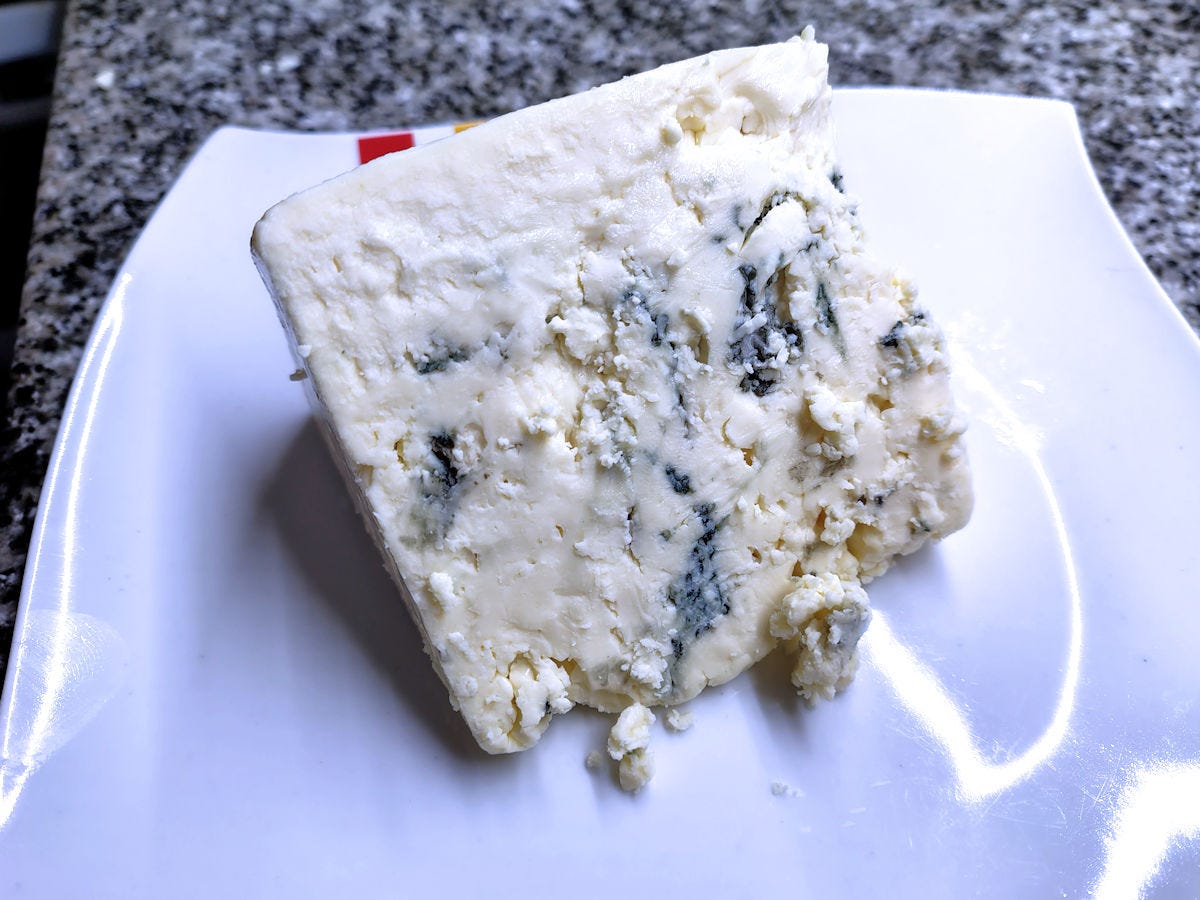

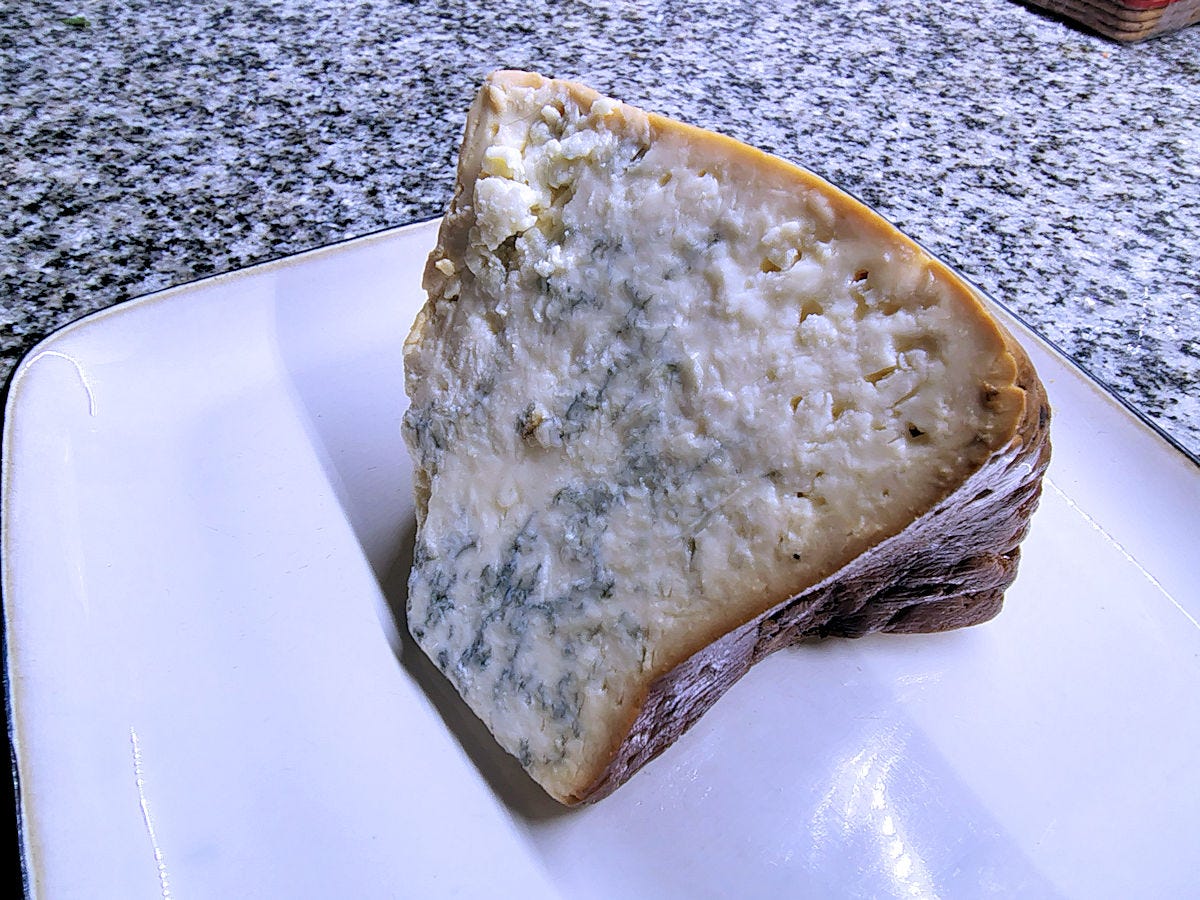
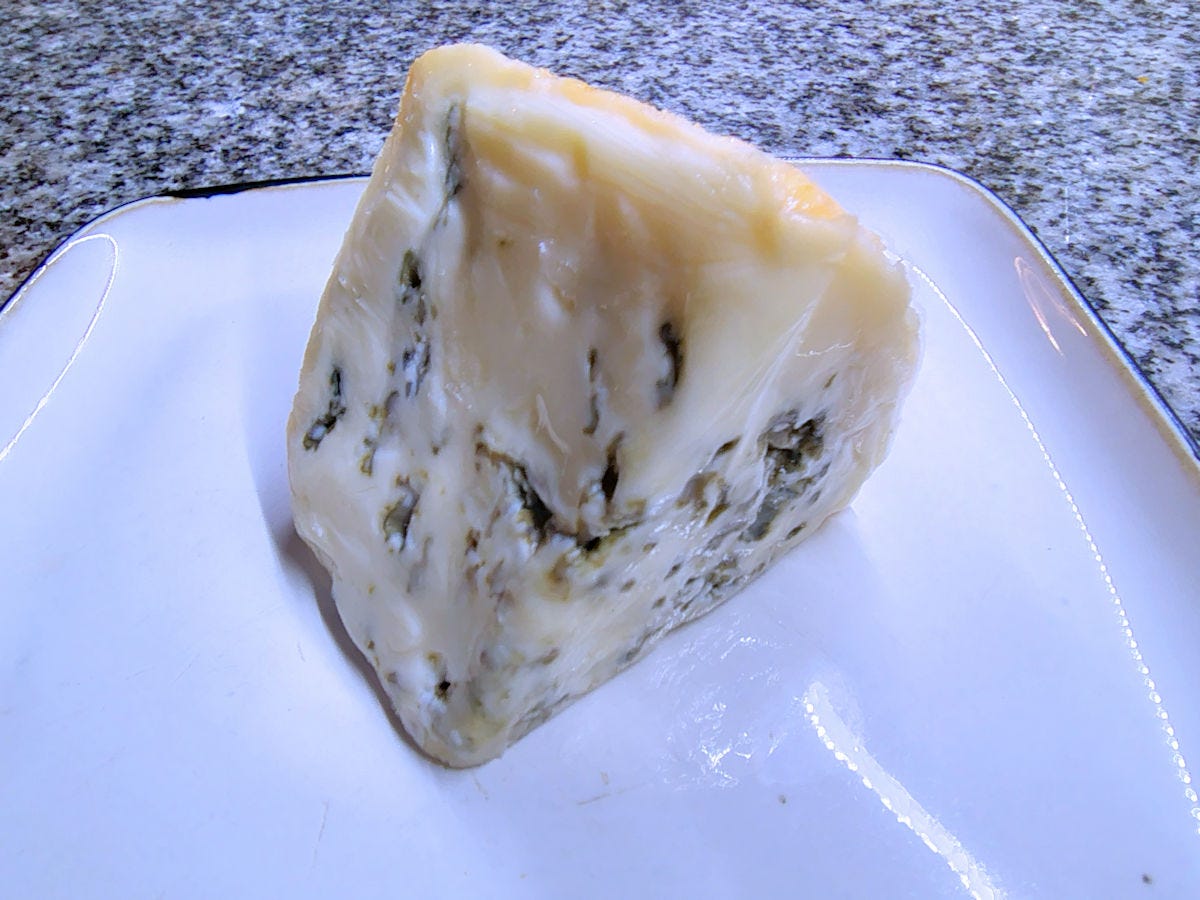
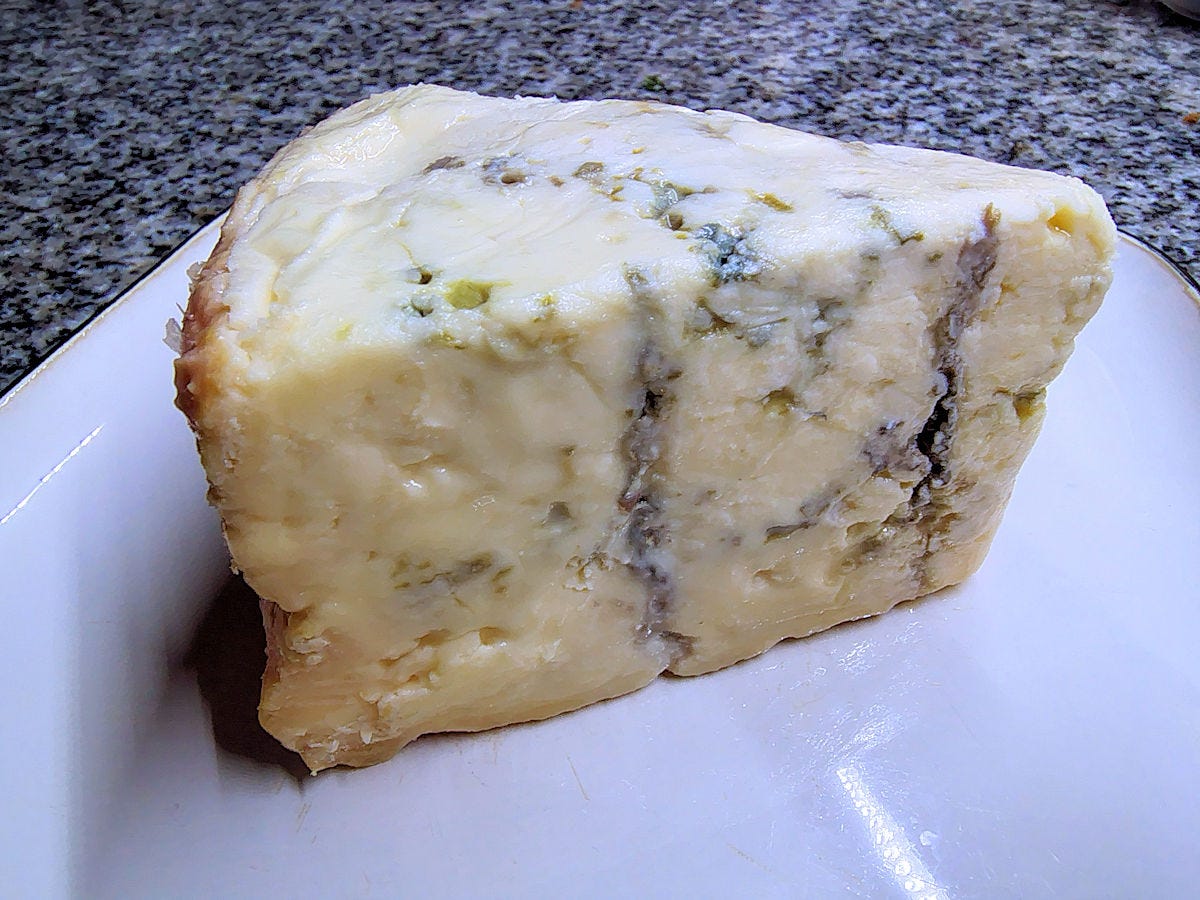
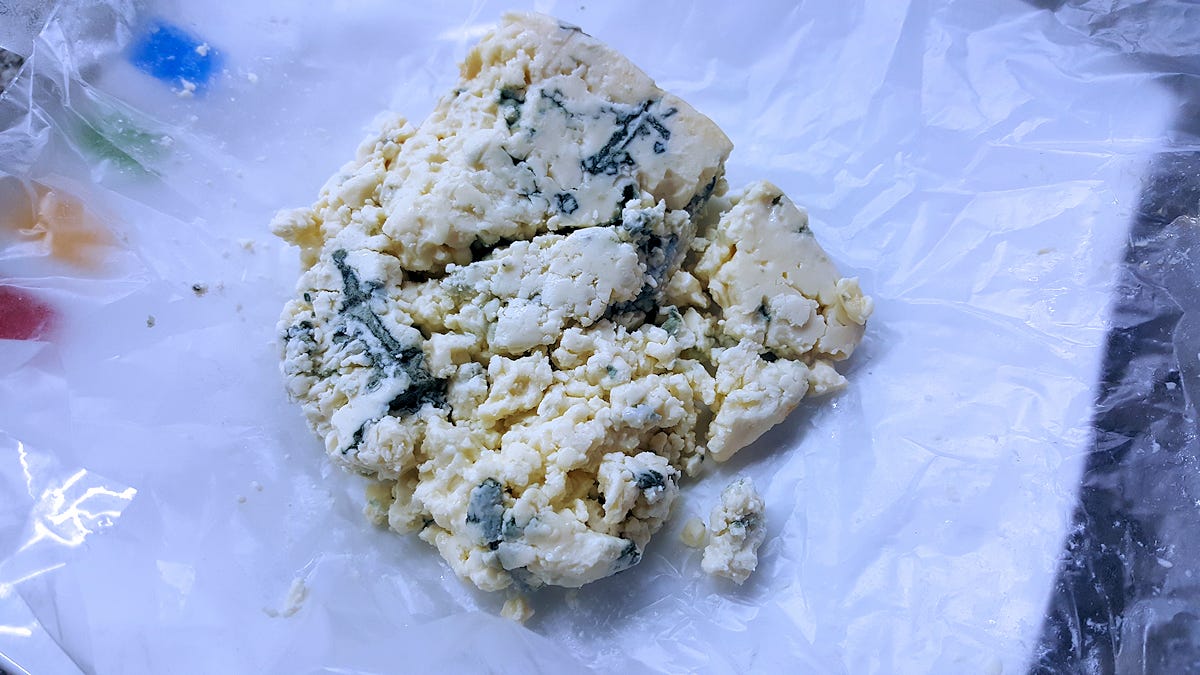
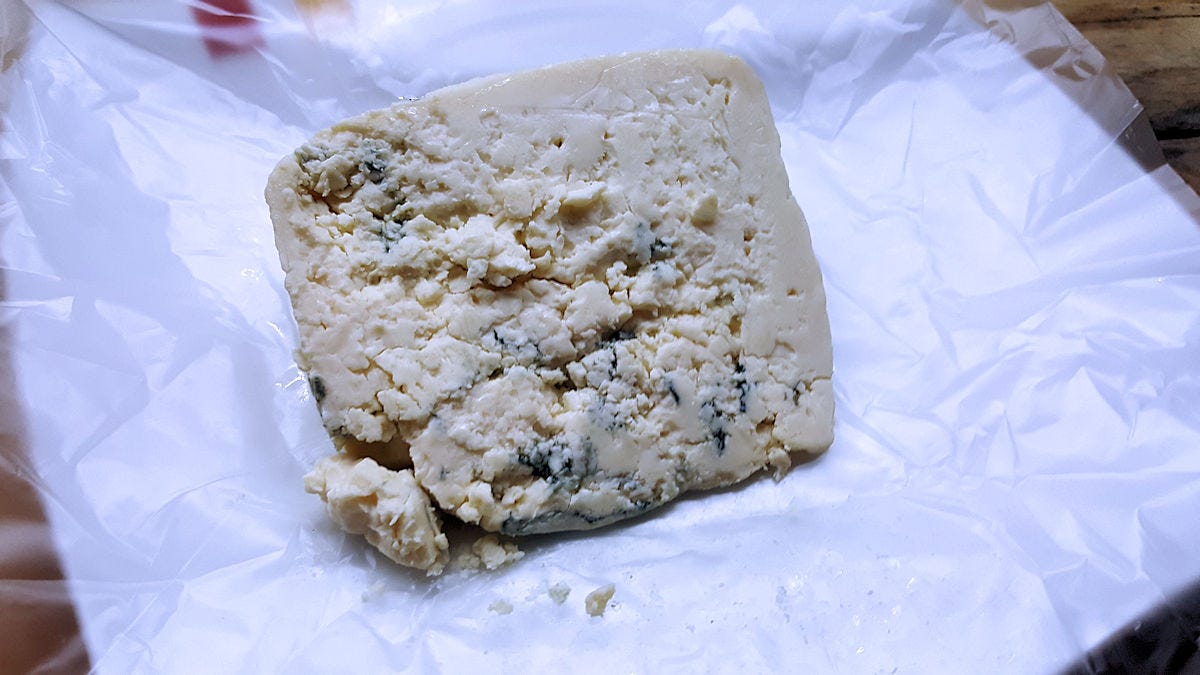
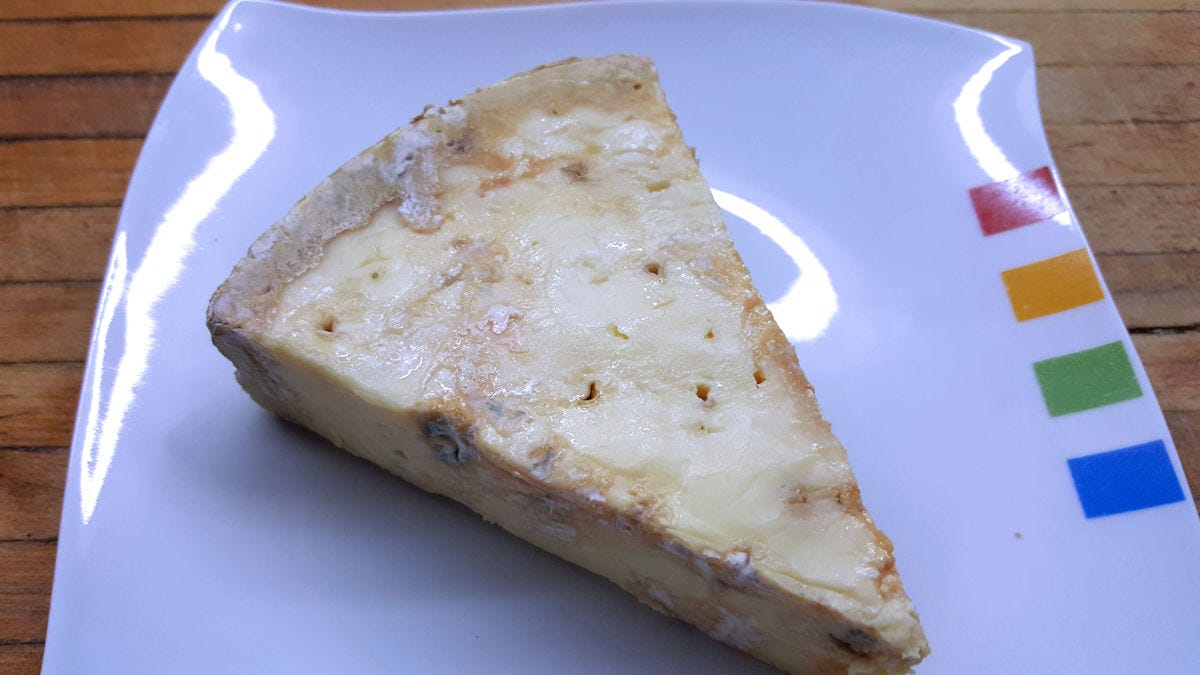

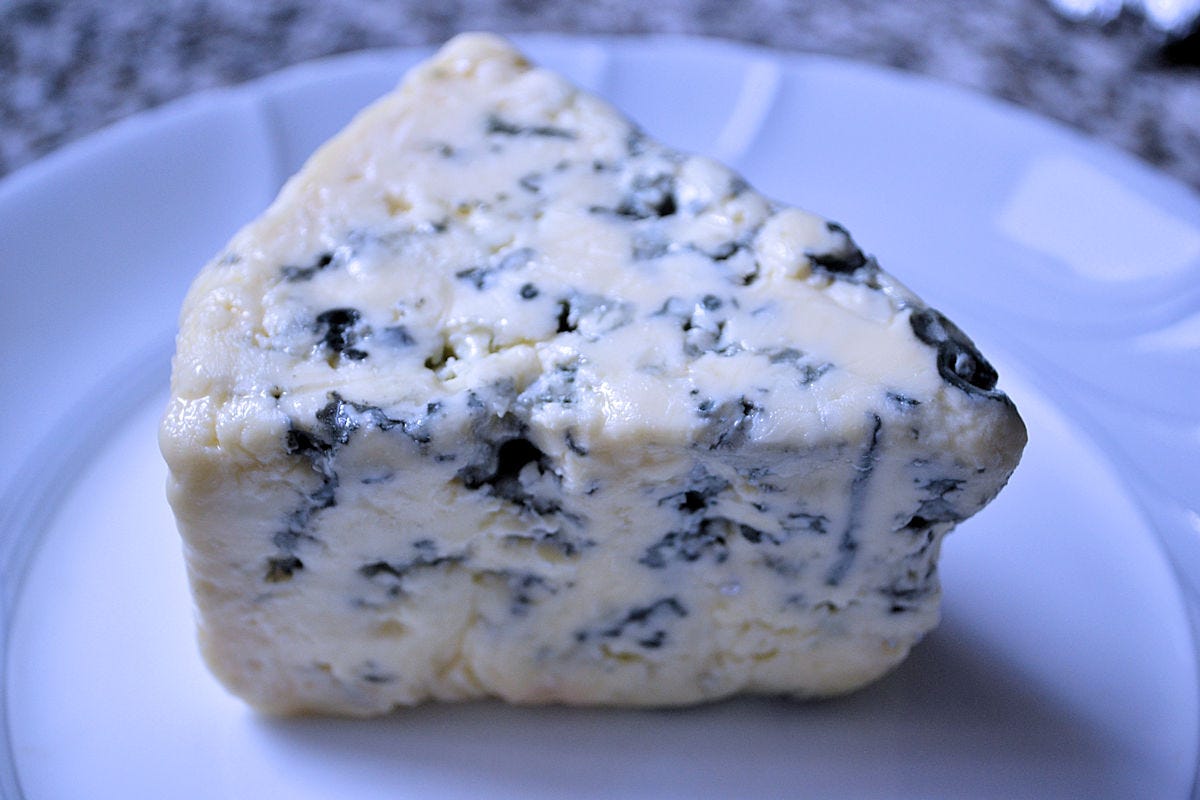
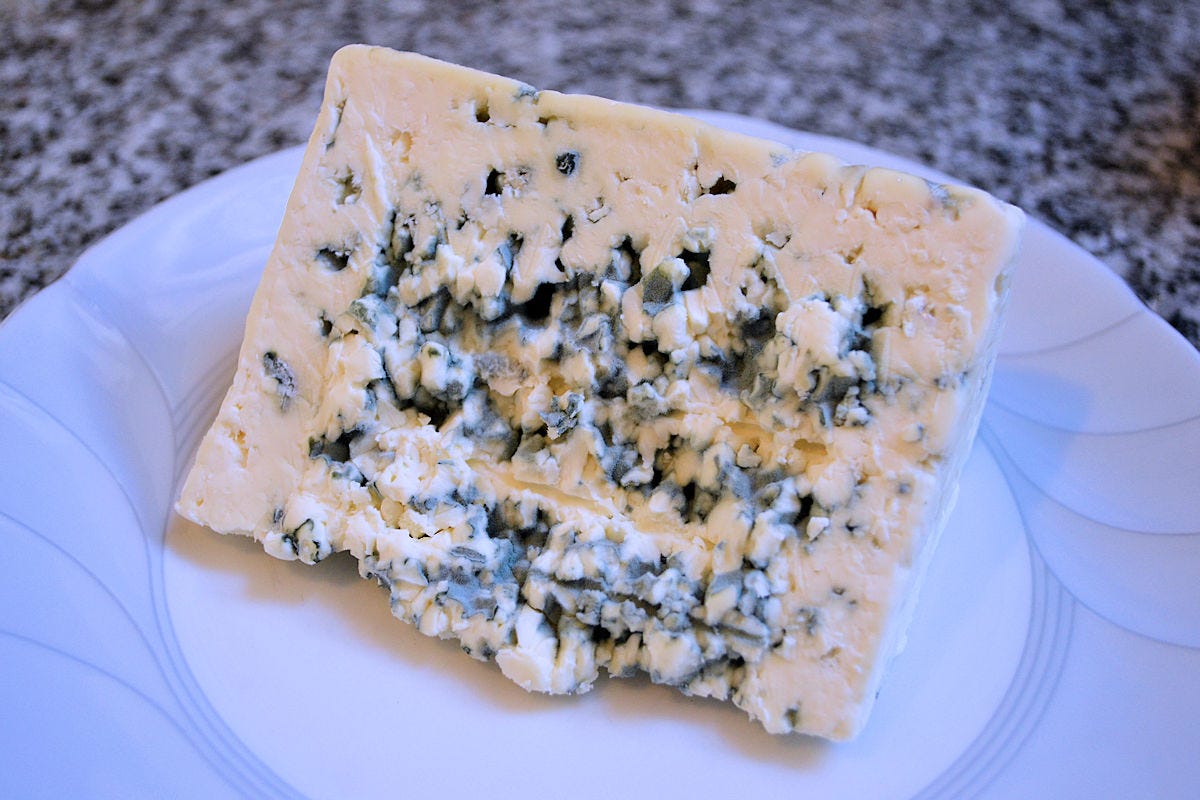
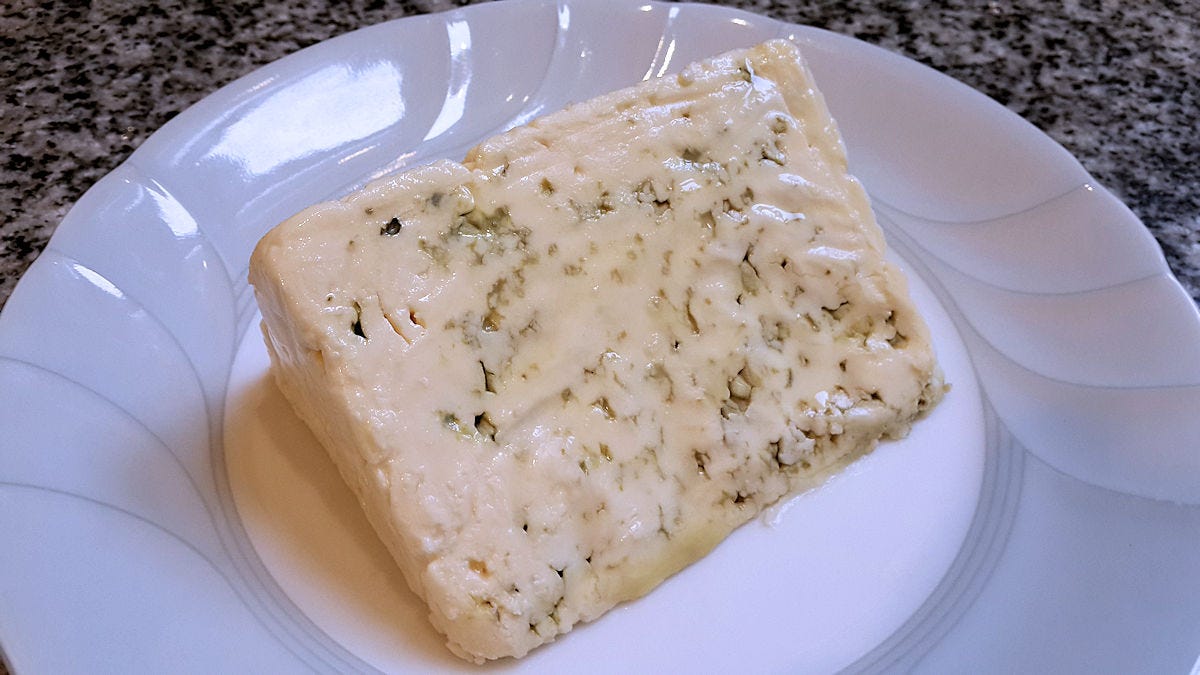


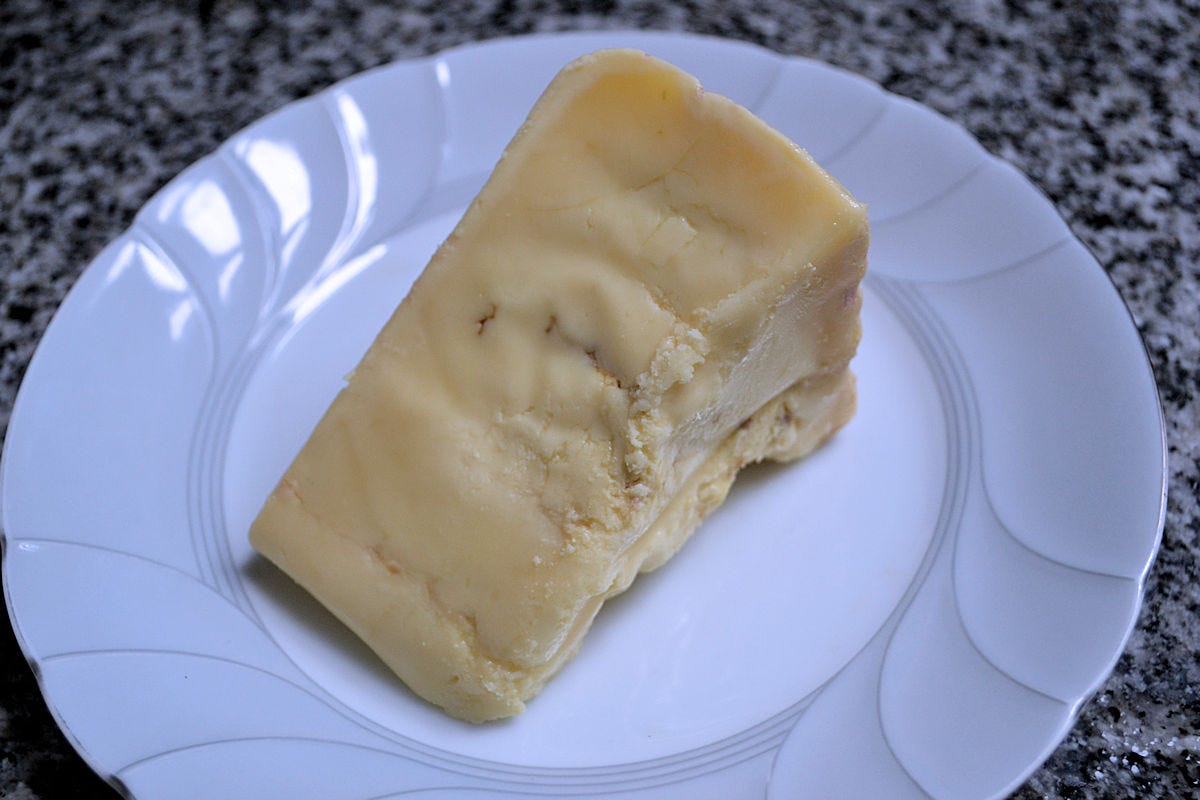
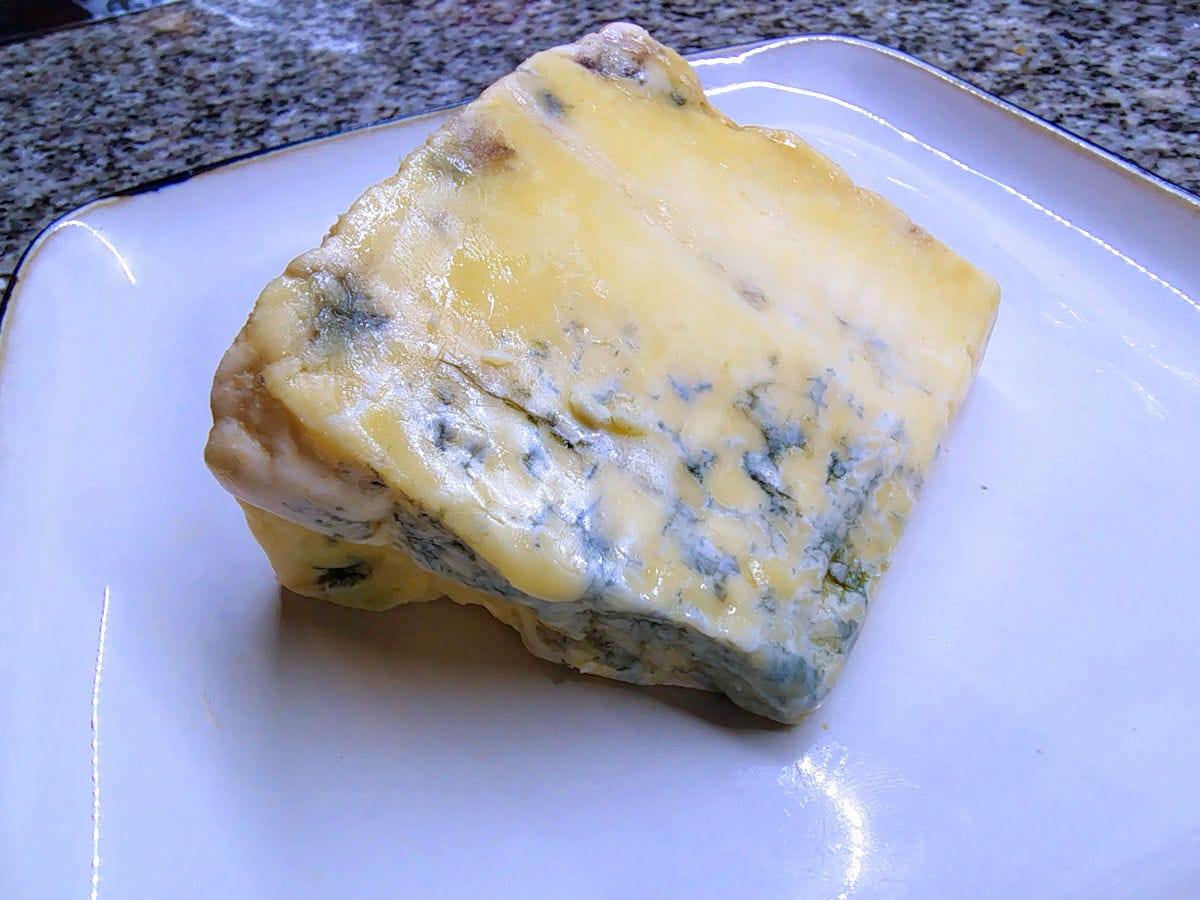
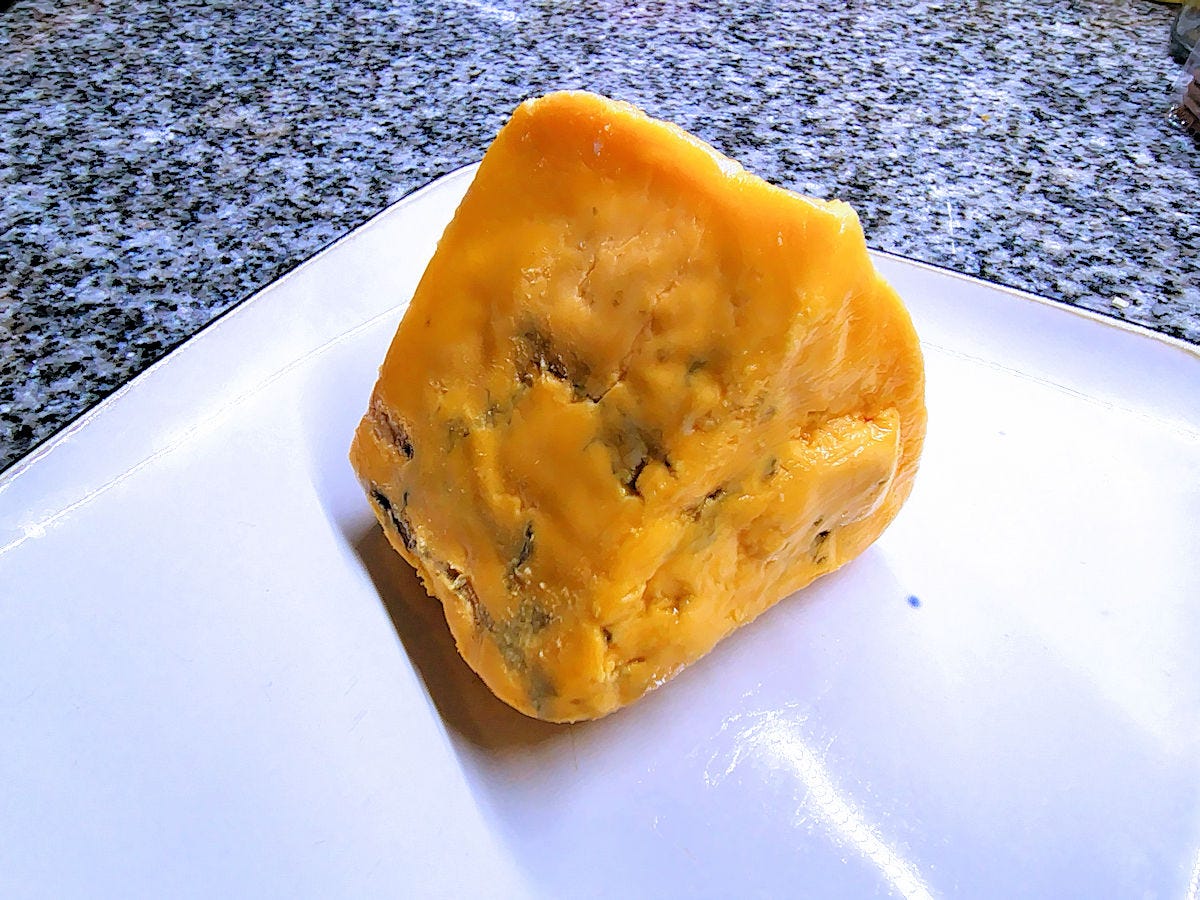
I love blue cheese and really enjoyed your tasting notes. Sorry I can't help you use up the rest!
Oooh; I love this! Thank you for putting in such hard work - I live Argentina, but the one thing I miss achingly is Stilton. I've tried blue's that you rate as 3 star and below and been deeply disappointed so far, so I shall be hunting for your top recommendations! Much appreciated.
Also available to help you with your glut if needs be... 😉🤣🤣
Katy x